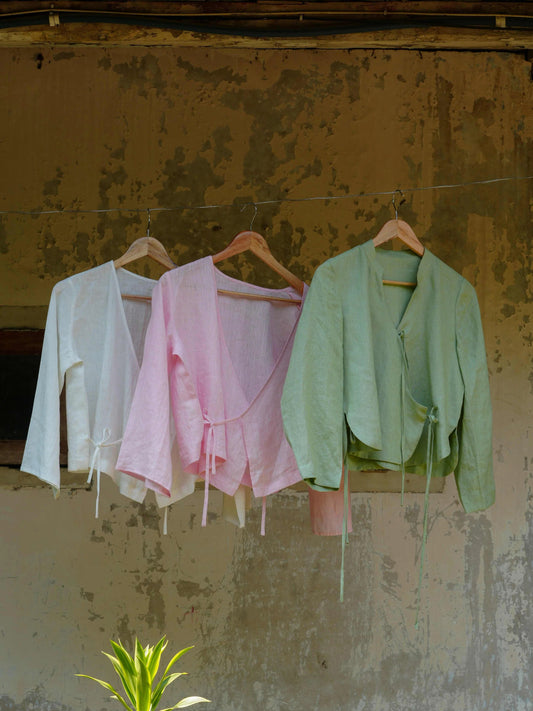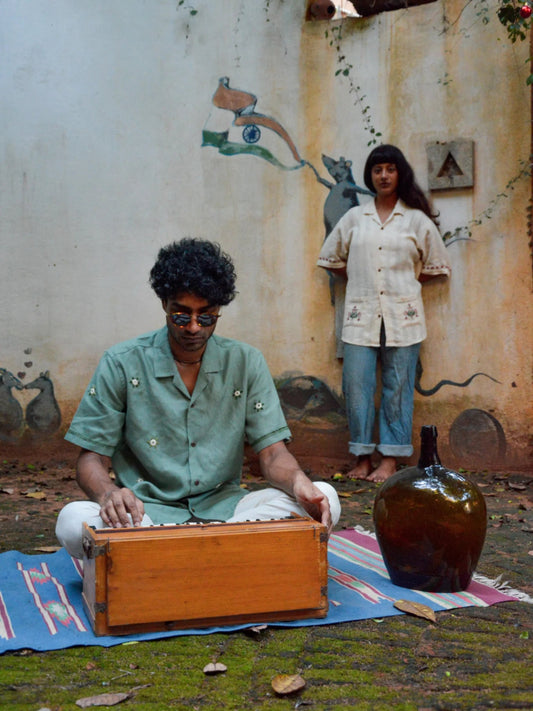Linen
Share
The story of linen began maybe 38000 years ago, we have the evidence by means of flax linen scraps from Caucasus to prove it! Fast forward to 10 millennia ago, when linen was found in ancient dwellings in Switzerland. Zoom to Mesopotamia in 5000 B.C., where ample evidence of linen as garments were reserved for the ruling class. Ancient Phoenician traders spread linen to Europe around 3000 BC, but around the same time,linseed and flax seeds were recovered among Indus valley civilization sites alongwith cotton, jute, etc. If that doesn't make linen global, I don’t know what does!
Romans called the linen plant ‘linum usitatissimum’ (linum meaning thread or thread plant and usitatissimum is Latin for most useful). Linen also held a place of importance among many religions, its cultural significance in ceremonies due its allure of being “sprung from the earth” denoting purity, immortality and cleanliness. Linen prospered in the middle ages, faced some decline just before the Industrial revolution in Europe, but suffice to say, has gained back its popularity in modern times.
All this to say, linen has by far proven its durability as a fabric with ratified provenance dating back 38000 years. If the Tarkhan linen dress can survive after being excavated after 5100 years, then there really is no reason why quality linen cannot survive in our closets forever! Check out some of our chic designs made with superior quality linen from stellar Indian makers.




